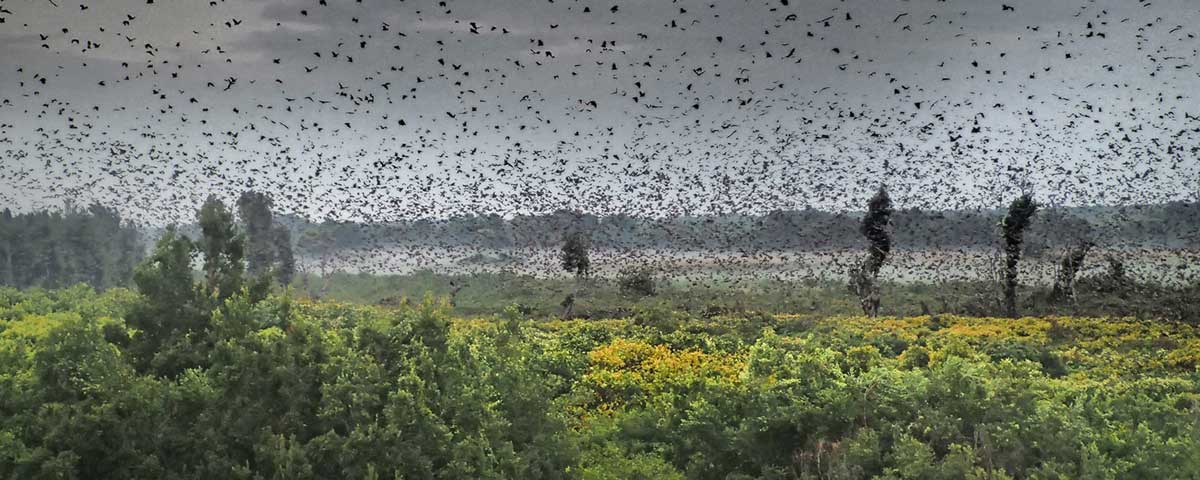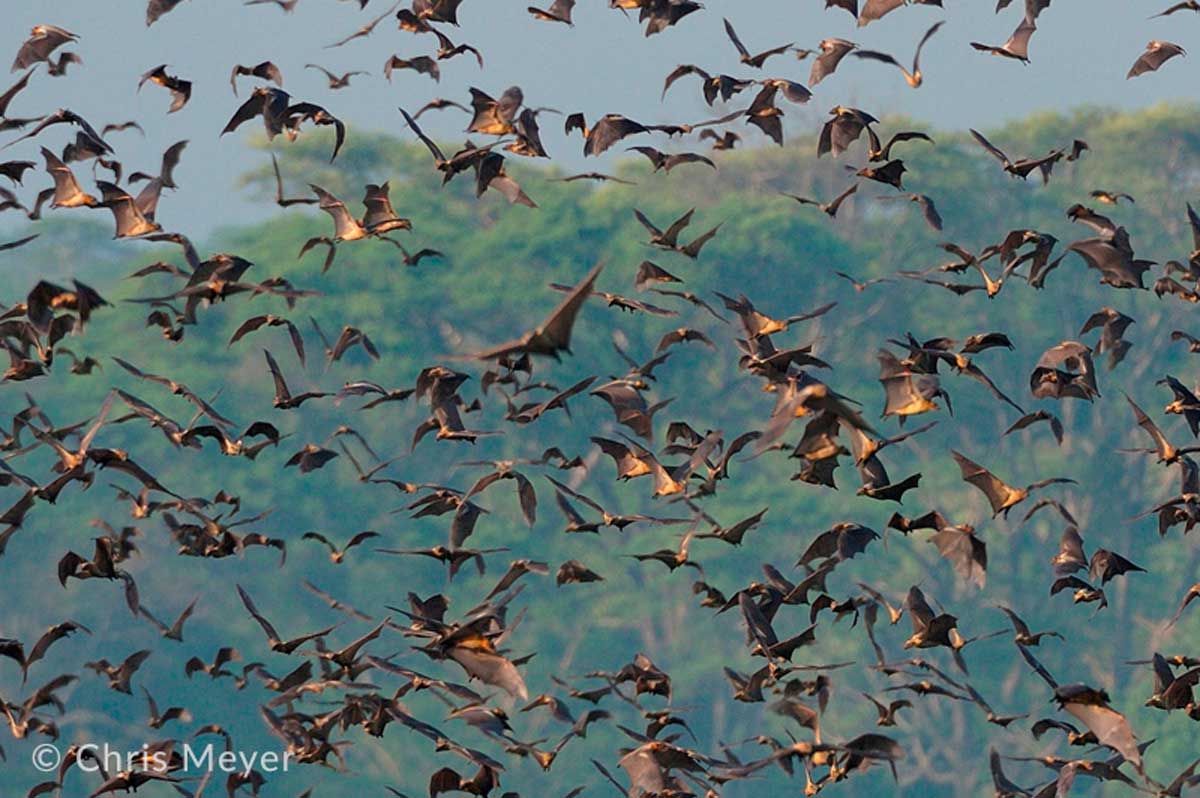 Dramatic skies with clouds that argue endlessly provide the backdrop for a rather unique annual migration localised to an area deep within the Kasanka National Park. The relatively unknown annual migration we’re referring to is the flood of fruit bats that descend upon the evergreen swamp forests in this region of northern Zambia.
Dramatic skies with clouds that argue endlessly provide the backdrop for a rather unique annual migration localised to an area deep within the Kasanka National Park. The relatively unknown annual migration we’re referring to is the flood of fruit bats that descend upon the evergreen swamp forests in this region of northern Zambia.
The bat migration is actually rated as one of the most impressive migrations on earth, and clouds of bats literally drown out the natural backdrop as they knit and weave their way through the sky. This is a phenomenon not to be missed by budding chiropterologists.
Fruit bats boast an impressive wingspan of over 1 metre and are often referred to as “flying foxes”. There are roughly 8 million large bats that migrate to a small riverine forest in the national park over a period of 90 days from roughly October through to November. The bats migrate from the Congo Basin to feast on the abundant fruits available in the many orchards dotted across Kasanka.
Imagine witnessing clouds of thousands of bats while staying in the Kasanka National Park. The park is home to contrasting scenes of mixed woodlands and vegetation. Expansive lakes, rivers and swamps cut through the forests and provide the ideal landscape for a safari. Kasanka is an endless waterlogged landscape and offers exquisite sightings of hippo, rare sitatungas and birdlife.
Accommodation for the Annual Fruit Bat Migration in Kasanka National ParkWe recommend staying at the Wasa Lodge or the Luwombwa Chalets. Wasa Lodge overlooks the Wasa Lake that is filled with bloats of hippo. A safari at Wasa includes game walks, visit to community projects, game drives and is a great place for viewing the bat spectacle during the migration period.
Luwombwa Lodge is ideally located on the banks of the Luwomba River, and visitors have a choice of staying in chalets surrounded by pristine riverine vegetation.


